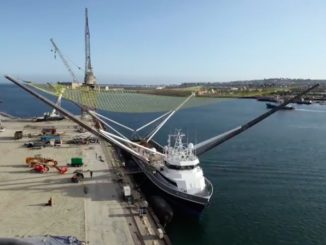NOTE: Updated with correction from Planet.
India’s space agency has released stunning video captured by cameras mounted on-board a rocket that launched this week with 104 satellites.
The views begin with the blastoff of the 145-foot-tall (45-meter) Polar Satellite Launch Vehicle from India’s east coast, then the separation of the rocket’s six strap-on solid rocket boosters and main stages.
The video then jumps to the deployment of the Cartosat 2D environmental satellite, the mission’s primary passenger, to begin its tasks aiding Indian infrastructure planners and mapmakers. Two Indian-built nanosatellites carrying experimental Earth observation sensors are then seen flying away from the PSLV’s fourth stage in orbit 300 miles (500 kilometers) above the planet.
Next comes the release of 101 CubeSats from 25 “QuadPacks” mounted on the rocket. The deployments from both sides of the rocket occurred at intervals of every few seconds, taking around 10 minutes for all of the tiny spacecraft to fly free of the rocket.
Most of the satellites seen in the video are CubeSats built and owned by Planet, a San Francisco-based company with a fleet of more than 140 mini-observatories looking down on Earth.
Tiny magnetorquers were to gain pointing control of each of Planet’s 88 CubeSats, and the satellites — which are not equipped with rocket thrusters — will be spread out along their orbital path by tilting into the rarefied air flow in the uppermost reaches of Earth’s atmosphere, generating minute drag forces, according to a representative of the company.
“After satellites are deployed, they begin an on-board commissioning process, which includes attitude control system calibration, de-tumbling, and sensor calibration,” said Rachel Holm, a Planet spokesperson. “We use magnetorquers to spin down the satellites. In about three months, all 88 will normal imaging operations. It will take a few months longer for us to phase them out along their orbital plane in a ‘string of pearls’ formation.”
Other CubeSats on the mission included eight commercial weather satellites for Spire Global, another San Francisco company, and experimental and educational payloads for institutions in Switzerland, Israel, the Netherlands, Kazakhstan and the United Arab Emirates.
Read our full story for details on the mission.
Email the author.
Follow Stephen Clark on Twitter: @StephenClark1.



